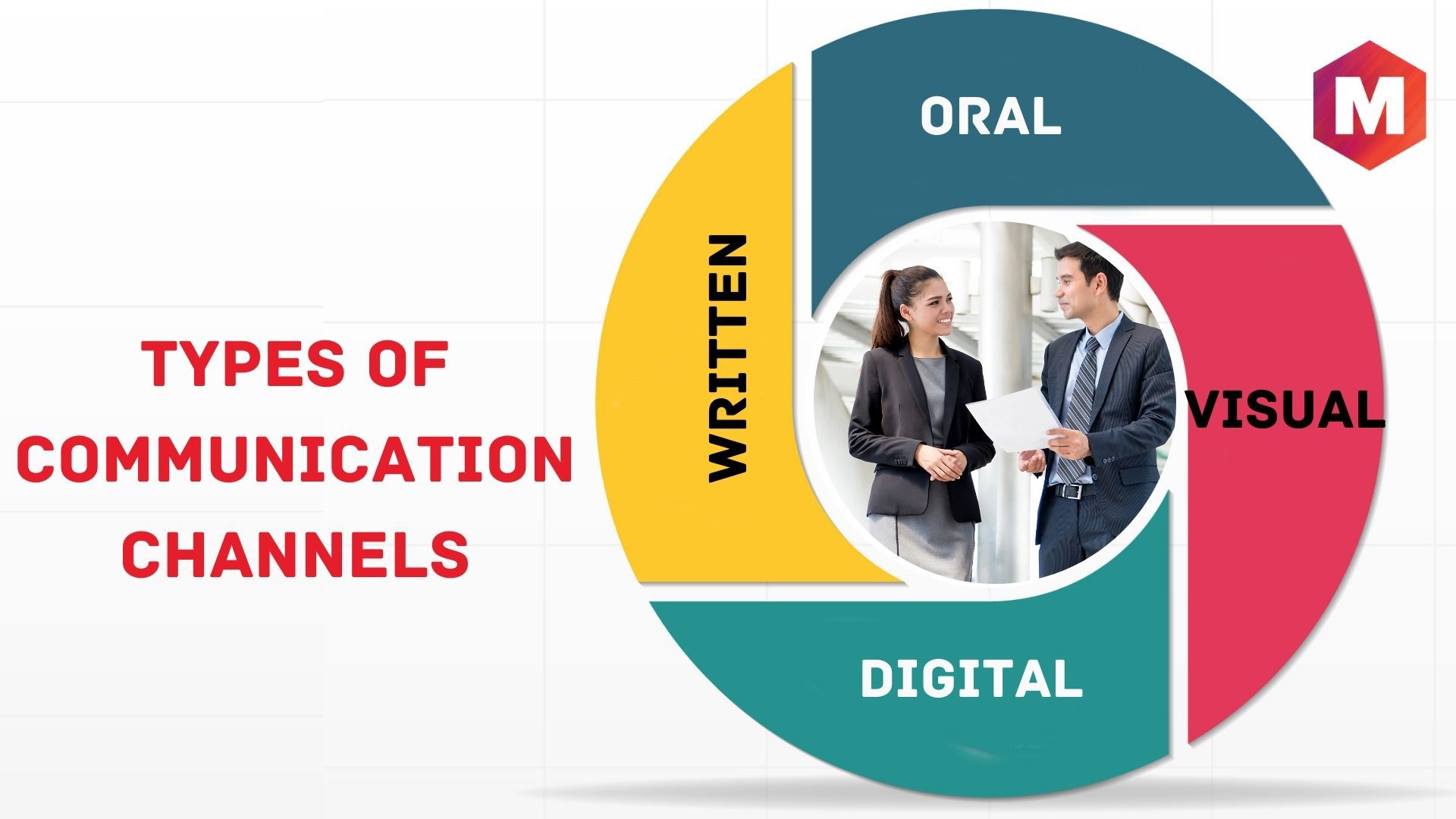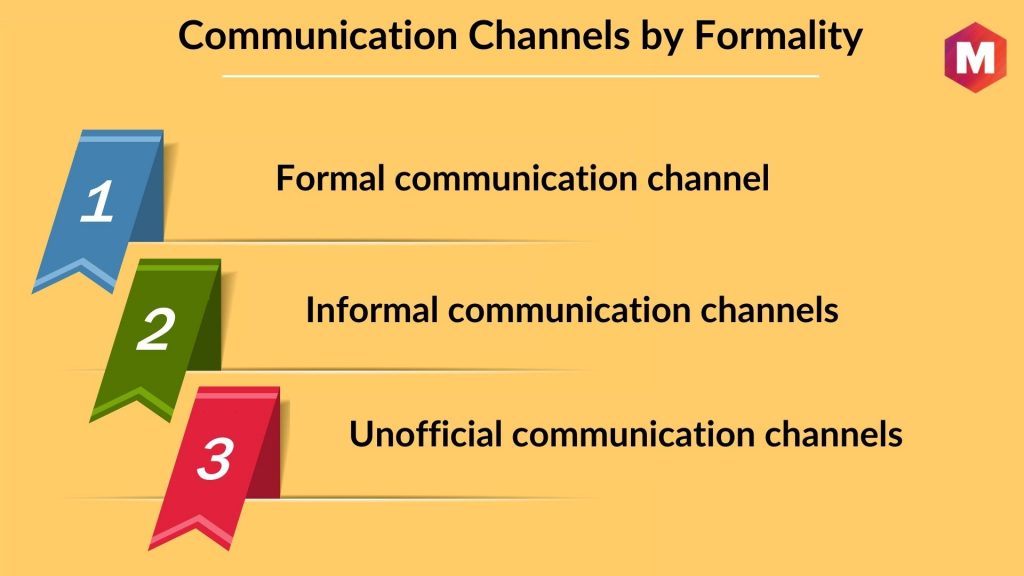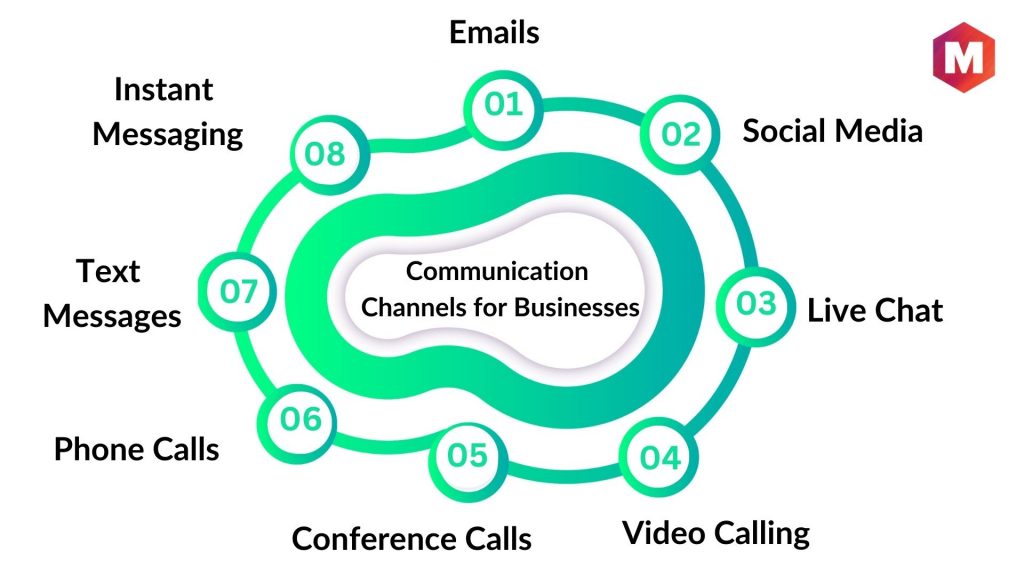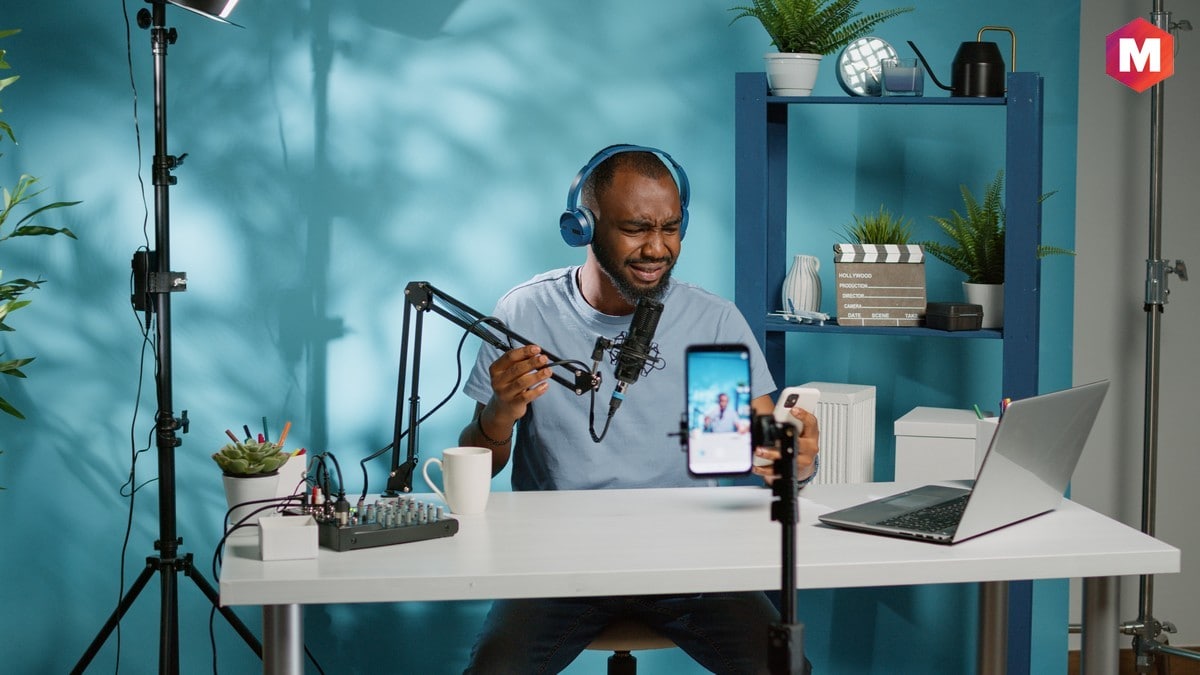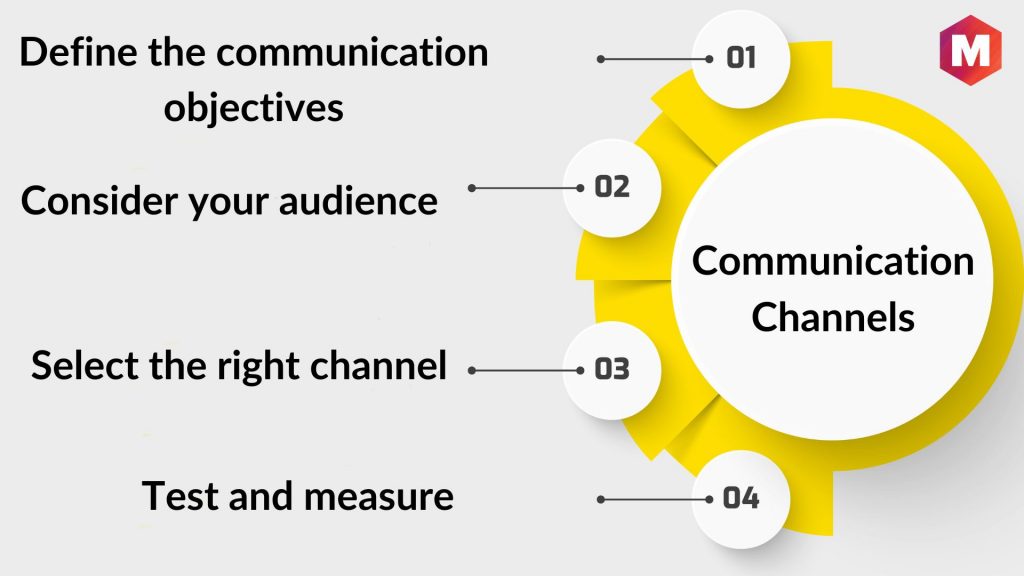
What are Communication Channels and Their Types?

Communication channels are the various methods used to exchange information, ranging from traditional means like face-to-face conversations to modern digital channels such as web conferencing and augmented reality The right channel should be chosen based on the objectives and audience of the communication
Different methods are utilized to convey messages, which are known as communication channels. These channels may include phone calls, emails, text messages, or face-to-face conversations. Communication channels serve different purposes such as providing information, requesting feedback, building relationships, or giving feedback. The most frequently used channels for communication are verbal ones like face-to-face conversations, video conferencing, and telephone calls. Additionally, nonverbal channels like body language, including facial expressions and gestures, and written communication, like social media posts, emails, and text messages are also utilized. The selection of the appropriate communication channel is pivotal to ensure the success of business communication.
What are Communication Channels?
Communication channels refer to the various methods through which individuals within an organization, workplace, or daily life interact and communicate with one another. Effective communication channels are crucial to aligning employees with company objectives, breaking down barriers between departments, and fostering creativity in the workplace. Without the appropriate communication channels in place, achieving these goals can prove to be a daunting task.
Choosing the right communication channel can make or break a business meeting. It can impact the success of sharing new information with the entire team or discussing a project with a colleague. Understanding which channel is most effective is essential for a positive outcome.
Types of Communication Channels
Effective business messages can be conveyed through various communication channels, including body language, written and verbal communication, and other channels. Each channel plays a vital role in directing and delivering messages.
Let us have a look at some of the types of communication here and now
1. Written
Written communication channels are often regarded as the most formal mode of communication, but they tend to be slower compared to other forms of communication. Typically, written correspondence is utilized for drafting contracts, sending notifications, and preparing company-wide documents that require a formal tone or signature. Internal channels for written communication may come in various forms.
Memos
Letters
Reports
2. Oral
Informal and speedy, oral communication channels serve as a means for brainstorming, impromptu meetings, and small talk. Verbal in nature, this form of communication lacks formality.
and video conferencing, which allow for real-time conversations between individuals or groups.
Rewritten: Oral communication can be challenging to document, so it is often paired with other forms of communication like email or instant messaging. There are various forms of oral communication, such as telephone calls and video conferencing, that enable real-time conversations between individuals or groups.
Video conferencing
In-person meetings
3. Visual
Visual communication channels are a mix of both formal and informal channels.
, graphs and charts, diagrams, videos, images, and even animations. Each of these formats has its own unique advantages and can be utilized to better communicate specific types of information. For example, graphs and charts are great for showcasing data trends, while diagrams can be used to explain complex processes. When used correctly, visuals can make business communications more engaging, memorable, and impactful.
Videos
Infographics
Images
4. Digital
The swiftest and most relaxed means of communication are digital channels. These channels are commonly employed for casual conversations, brainstorming sessions, and spontaneous meetings. Due to the difficulty of documenting digital communication, it is typically utilized in conjunction with other forms of communication, such as email or instant messaging. There are a variety of digital communication options available, including:
Instant messaging
Chat rooms
Social media
Webinars
Communication Channels by Formality
Different communication channels on the grounds of formality are
1. Formal communication channel
Formal communication within a company encompasses a variety of important documents and presentations, such as business plans, strategic goals, annual reports, agreements, and workplace safety policies and procedures. These materials are typically shared through channels like board meetings, Town halls, video conferences, and webinars, which are vital for both external and internal communication success.
2. Informal communication channels
Communication about day-to-day tasks, project updates, employee feedback, new ideas, and feedback are a few examples of informal communication.
Various communication channels are utilized for both external and internal business messages. These include email, instant messaging, social media platforms like Yammer, and face-to-face interactions.
3. Unofficial communication channels
Unofficial communication refers to conversations that are not intended for the entire organization and usually involve gossip or personal topics. These types of exchanges typically take place during casual moments like office lunches, coffee breaks, or after-work drinks.
Communication Channels by Means or Mediums
1. Digital Communication Channels
Communication that happens via computers and the internet are digital channels.
Communication platforms like Skype, Zoom, Google Hangouts, and GoToMeeting are all examples of digital channels.
2. Analog Communication Channels
Communication that happens without the use of computers or the internet is analog.
Telephone calls, face-to-face conversation, and radio are all examples of analog communication channels.
3. Print Communication Channels
Print communication refers to the form of communication that takes place through print media, which includes newspapers, magazines, and books. The channels utilized for this type of communication include special delivery mail, handouts, and billboards.
4. Broadcast Communication Channels
Communication that happens via television or radio is broadcast communication.
Communication channels for this type include news stations, talk radio, and podcasts.
Communication Channels for Businesses
Let us delve into the world of some of the best business communication channels and their roles for connected teams
1. Emails
Email communication is considered the most formal and reliable way to contact someone. This mode of communication is particularly useful when sending official documents or information that needs to be recorded.
2. Social Media
Social media has become the go-to platform for informal communication. Whether it's sharing pictures or engaging in group chats, social media offers a wide range of possibilities to connect with others.
3. Live Chat
Live chat communication has become a highly favored method for businesses to connect with their customers in real-time, effectively addressing customer queries and providing support. Its popularity is on the rise due to its convenience and timeliness.
4. Video Calling (Face to Face)
Video calls offer a level of personal interaction that cannot be matched by emails or text messages. They provide a direct channel for team meetings and training sessions, making them an ideal communication tool for businesses and individuals alike.
5. Conference Calls
Conference calls offer a convenient solution for businesses with remote or distributed teams. With the ability to connect multiple participants on a single video call, collaboration and coordination become seamless and efficient.
6. Phone Calls
Phone calls have stood the test of time as one of the most dependable and traditional modes of communication. It provides an uninterrupted conversation experience, especially for those who want to focus solely on the discussion at hand.
7. Text Messages
Communication via text messages is perfect for those who need to communicate quickly and easily. This channel is also great for sending reminders and updates.
8. Instant Messaging
Instant messaging is a convenient way to have real-time conversations. It's ideal for brainstorming sessions and impromptu meetings, allowing for quick and efficient communication.
Rise of Digital Communication Channels in the Workplace
The rise of digital channels is transforming the way we communicate in the workplace. Compared to traditional methods, these channels provide numerous benefits, particularly in terms of exchanging information-rich content.
Rewritten: Compared to traditional methods like phone calls and face-to-face meetings, digital channels are faster and more convenient. They offer flexibility since they can be accessed from any location and at any time. Moreover, digital channels enable a more personal touch through the use of rich media like images and videos. This makes it easier to establish connections and build relationships with colleagues.
Finally, digital channels are often more cost-effective than traditional methods, as they often require less time and resources to set up and maintain.
19 Modern Digital Communication Channels
Social media has become an integral part of our daily lives, with platforms like Facebook, Twitter, and LinkedIn being among the most widely used digital channels. These platforms offer users the ability to share a variety of content, including text, images, videos, and more, with a vast audience.
1. Instant Messaging
Instant messaging apps, such as WhatsApp and Skype, are another popular type of digital communication channel. These apps allow users to send text messages in real-time.
2. Video Calling
Video calling apps, such as FaceTime and Skype, allow users to make voice and video calls from any location.
3. Voice Calling
Voice calling apps, such as Skype and WhatsApp, allow users to make voice calls from any location.
4. Email
Email is a digital communication channel that allows users to send and receive messages.
5. Webinars
Webinars are digital events that allow a large number of people to attend remotely.
6. Online Courses
Online courses are a type of digital communication that allows users to learn new skills from any location.
7. Podcasts
Podcasts are a type of digital communication that allows users to listen to audio content from any location.
8. Web Conferencing
Web video conferencing tools and platforms, such as Zoom and Skype, allow users to host and attend online meetings.
9. Screen Sharing
Screen sharing apps, such as Zoom and JoinMe, allow users to share their screens with other users in real-time.
10. VoIP (Voice over IP)
VoIP is a type of digital communication that allows users to make voice calls over the internet.
11. Cloud Communication
Cloud communication platforms, such as Twilio and RingCentral, allow businesses to manage their communications from the cloud.
12. Unified Communications
Unified communications platforms, such as Cisco and Avaya, allow businesses to manage all of their communications from one central platform.
13. Collaboration Tools
Collaboration tools, such as Slack and Microsoft Teams, allowing users to work together on projects in real-time.
14. Project Management Tools
Project management tools, such as Asana and Trello, allow users to track and manage projects from any location.
15. Online Communities
Online communities, such as Reddit and Quora, allow users to connect with others who share similar interests.
16. Gamification
Gamification is a type of digital communication that uses game-like elements, such as points and badges, to engage and motivate users.
17. Augmented Reality
Augmented reality is a type of digital communication that overlays digital content in the real world.
18. Virtual Reality
Virtual reality is a type of digital communication that creates a simulated environment.
19. Wearables
Wearable devices, including smartwatches and fitness trackers, have revolutionized the way we communicate and interact with digital applications. These gadgets allow users to conveniently access information and engage with their favorite apps, all from the convenience of their wrist.
How to Choose the Right Communication Channels?
When deciding on the most suitable communication channel, it's crucial to take into account the specific objective of the communication. If the aim is to connect with someone in a different country, opting for a phone call or video conference would likely be the most effective choice. Conversely, if cultivating relationships with clients or business associates is the goal, face-to-face meetings are often the ideal approach. Additionally, it's essential to consider the communication preferences of the recipient(s) involved. While some individuals may favor email or text communications, others may prefer direct conversations or in-person meetings.
When selecting a communication channel, it is crucial to consider the message, audience, and timing. It is essential to keep in mind that different channels have their own advantages and limitations. It is vital to select the appropriate channel that suits the specific communication needs.
1. Define the communication objectives
Identify your target audience and understand their preferences and behaviors. This will help you determine which communication channels they are most likely to use and respond to. Consider factors such as age, gender, location, and industry. Conduct research and gather data to support your decisions. This will ensure that your message is delivered to the right people, at the right time, and in the right way.The first step is to define what you want to achieve with your external communication channels. This will help you select the most appropriate channel.
2. Consider your audience
The second step is to consider who your audience is and what their preferences are. This will help you determine which channels they are most likely to be receptive to.
3. Select the right channel
Make sure to choose the appropriate communication channel after analyzing your goals and identifying your target audience. To determine the most effective channel, try using various options and observe which one yields the best results.
4. Test and measure
Testing and measuring the outcomes of your internal communication channels is crucial to identify the most effective ones that align with your specific objectives. By following these steps, you can confidently choose the ideal communication channel for your requirements.
to ensure the continuity of the article.
Conclusion!
will guide you in identifying the most suitable communication channel for your company's internal, external, team, and workplace communications. By choosing the appropriate channel for each type of communication, you can maximize the likelihood of achieving positive results.Communication channels are the means through which people and businesses interact.
There are many different types of communication channels, each with its own strengths and weaknesses.
When choosing a communication channel, it's crucial to take into account the intended purpose of the message, the target audience's preferences, and the timeline for delivery. With numerous options available, selecting the appropriate channel is paramount. Share with us in the comments which communication channels you find most effective for your business!
